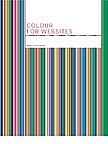Weblogs: Book Reviews
Color for Websites by Molly Holzschlag
Sunday, April 02, 2006Author: Molly E. Holzschlag
Publisher: RotoVision
Publish Date: October 2001
 For a web developer colour is one of those elusive qualities that's difficult to use. It seems like either you understand it completely, or you don't. The problem with using colour on the web is that its different to how colour works in print and in real life. This difference is one of those mysteries that makes being a web developer difficult.
For a web developer colour is one of those elusive qualities that's difficult to use. It seems like either you understand it completely, or you don't. The problem with using colour on the web is that its different to how colour works in print and in real life. This difference is one of those mysteries that makes being a web developer difficult.
In my current job I've had to deal with branding experts who talk about tints, harmonies and palettes, about emotive cues and high-net worth designs. And I never really understood what they were talking about. I bought a book about colour harmony a few months ago, and every great combination of colours I found looked absolutely awful when displayed onscreen. Colours looked completely different, and some combinations of colours resulted in an ugly black line between the two colours.
Although written in 2001, Molly's book Color for Websites explains how colour works in nature and print, and how differently it works on computers. It explains the difference between the natural world's Additive model of colour and the computer's Subtractive model. By explaining the differences, Molly eases a web developers path towards understanding how to work with colour online.
Molly explains the theory of colour, talking about colours that complement each other, colours that cause conflict, colours that work together in harmony. Each concept is detailed not just in notes, but using tools like colour wheels and pictures. Molly explains how texture can change a colour - I don't think I've ever read a better explanation of what a luster is on fabrics like silk.
With the theory comes some practical examples from Molly's own portfolio of customers. Molly covers how she uses colour to highlight or complement pieces of artwork. Explaining why its necessary to draw attention in some pieces, and not to draw attention in others. Images from line drawings, right through to photography are discussed, leaving the reader with a better understanding of some of the techniques of using colour to complement content.
There's a chapter that covers image file formats, what to use and when. Molly talks about the different types of images - vector and raster, and how image compression helps or hinders the image.I found the discussion interesting and inspiring. I'm tempted to spend some time right now playing around with colours and see if I can't better my understanding of what makes a good colour scheme.
For web designers with formal qualifications in design, there's probably nothing in this book you haven't covered before. For a web developer with a more technical background, Molly's book is an intriguing discussion into colour as well as a fascinating exploration of how to use colour on the web.
[ Weblog | Categories and feeds | 2011 | 2010 | 2009 | 2008 | 2007 | 2006 | 2005 | 2004 | 2003 | 2002 ]
